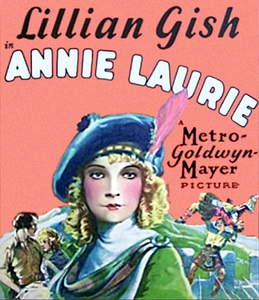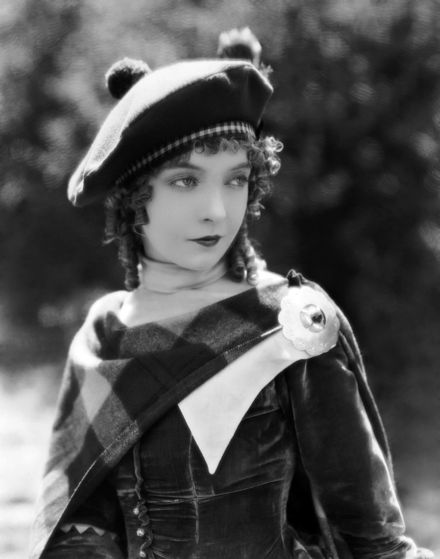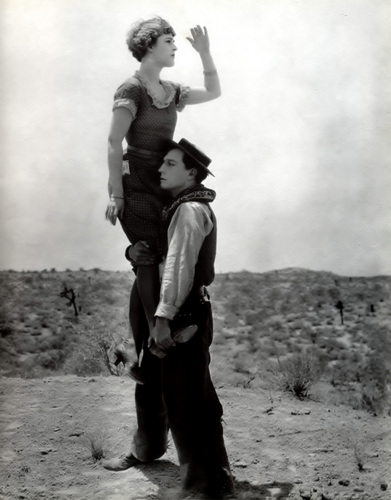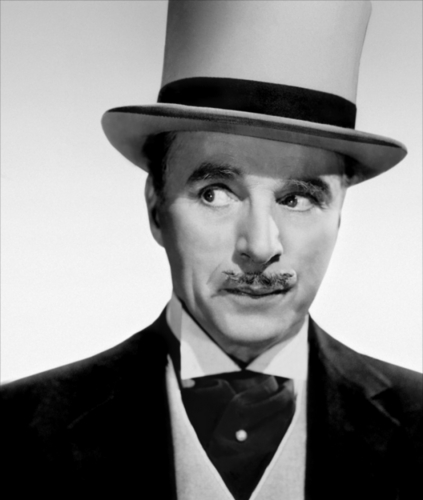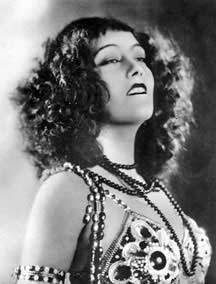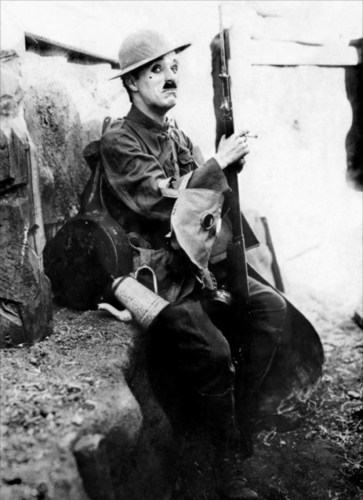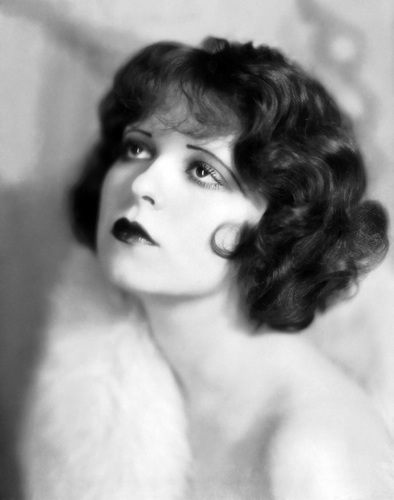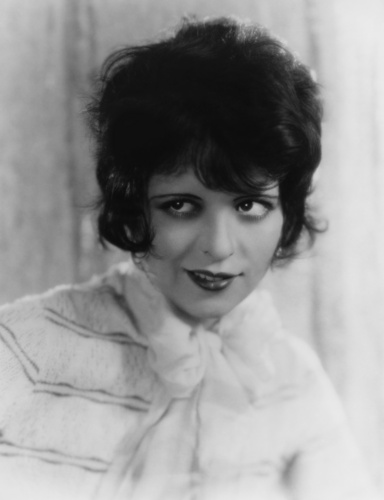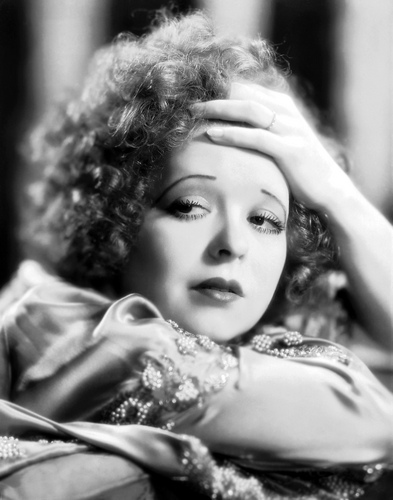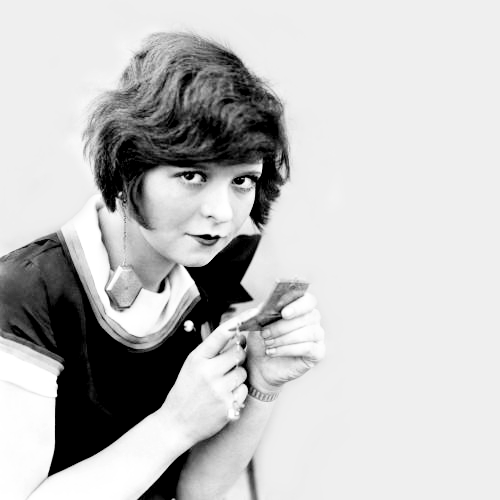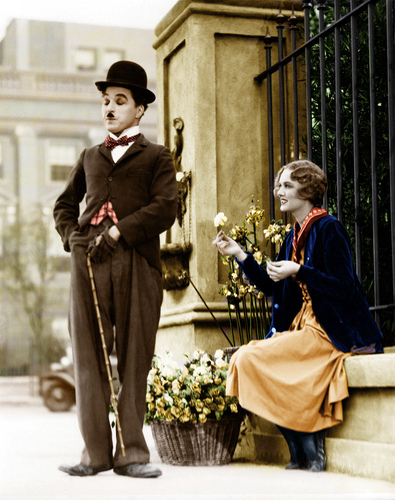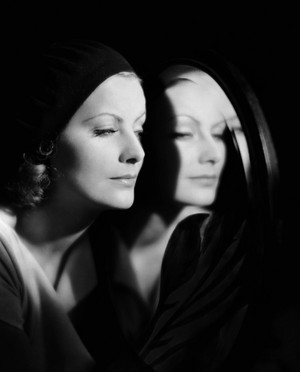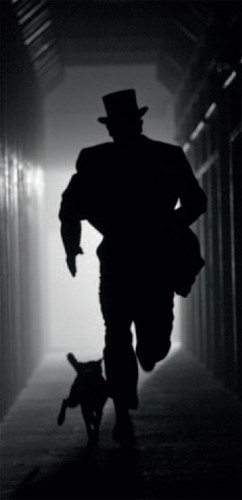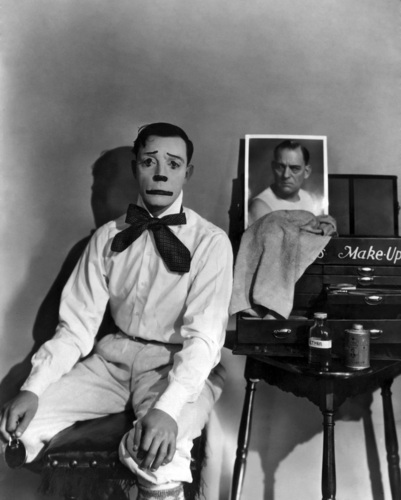In a kamakailan commemoration of St. Andrews araw the Glasgow Film Theatre (GFT) had a araw of films based in Scotland. The theme was called 'Hollywood dreams of Scotland'. The itinerary featured Disney Pixar's Brave, followed sa pamamagitan ng silent film Annie Laurie and ending with cult classic Highlander. But I will focus solely on one film: Annie Laurie.
Originally released on 11th May 1927, the historical drama stars silent icon Lillian Gish in the titular role. Pagsulat credits go to oscar nominated screenwriter Josephine Lovett; the film was directed sa pamamagitan ng John S. Robertson, director of Dr. Jeckyll & Mr. Hyde (1920); and the film was well edited sa pamamagitan ng William Hamilton, editor of classics Suspicion (1941) and tuktok Hat (1935).
The story itself was inspired sa pamamagitan ng a scottish folk song which in turn was inspired sa pamamagitan ng a poem sa pamamagitan ng William Douglas. In typical Hollywood fashion it is a pag-ibig story set in the Scottish highlands; only all scenes were filmed at MGM Studios, with sets built from scratch. The crew did a great job in creating the 17th century in a studio but it is a bit of a shame that nothing was filmed on location.
The initial story is of a young woman named Annie Laurie who falls in pag-ibig with Ian MacDonald of Clan MacDonald, rivals of Clan Campbell whom she is affiliated with. This leads to a pag-ibig tatsulok with Annie and her two suitors, both of who are from rival clans. What makes it interesting is that it takes place in the lead up to the massacre of Glencoe, an infamous Scottish tragedy where Clan Campbell soldiers massacred many MacDonalds on the orders of King William III.
The build up to the final act is well put together, with some interesting scenes involving Annie looking to help secure Clan MacDonald's safety. But the tanong is how much of the film is fact and how much is fiction?
The Fiction:
Although the characters are indeed fictional takes on real people there are many instances of genuine emotion. The rivalry for Annie's affections does lead to a face off between the two men; with Ian forced to walk through a crowd of Campbell men who slash his flesh as he makes his way through them, his arms tied as Donald Campbell looks on jeering. It is a great scene to watch; obviously it is easy to see the fakeness of the sword against the flesh of the hero but the scene itself speaks volume of the contempt between the two clans.
And then Campbell's treachery in not telling the MacDonald's the full facts behind the oath that they are to swear to the King. The MacDonalds would have received their original lands as a token of appreciation, but Campbell's desire to be rid of his rival causes the chain of events leading to the massacre.
As a result it is up to Annie Laurie to race to Glencoe to warn her pag-ibig of the betrayal which leads to the chief races against a heavy snow storm to make it sa pamamagitan ng the first of January to sign the oath of allegiance to the King. This is based on fact as the MacDonalds were delayed sa pamamagitan ng snow storms.
And it is shown in the following scene that it doesn't matter when the oath was signed. Campbell wants blood. So the Campbell soldiers, led sa pamamagitan ng their chief's son, arrive at MacDonald's tahanan seeking shelter. It's a scenario that is somewhat reminiscent of a storyline from current TV drama Game of Thrones involving a certain 'Red Wedding'.
It is once Annie Laurie has left the MacDonalds that the Campbells strike, with Donald Campbell shooting the chief. This leads to a full scale attack of the fortress that is held sa pamamagitan ng the MacDonalds as Annie learns the truth and fights her way to the tuktok of a mountain to light the beacon to signal the other clans to arms. This is intercut with battle scenes in the kastilyo walls as well as the brutal murder of villagers and children. The scenes are really well put together, with everything coming to a head with a faceoff between Ian and Donald, Ian killing his father's killer while proclaiming 'a Campbell for a MacDonald!'
Of course such a scene never took place as far as we know for the real leader of the Campbell party, Robert Campbell lived on for another four years. But for a sword fighting drama it is a good scene to satisfy the audience. It's not reality, but back then especially, the pelikula were a way of escaping reality. So in the tradition of Hollywood our heroine survived and went on to marry Ian MacDonald, new chief of the MacDonald clan.
The Players:
The movie's heroine is inspired sa pamamagitan ng the Scottish folk song Annie Laurie which in turn was inspired sa pamamagitan ng a poem sa pamamagitan ng William Douglas based on his pag-ibig for the real Annie Laurie who was born on 16th December 1682 so would have been almost 10 years old when the Glencoe Massacre took place. so in fact she would never have been there when the fued reached its conclusion. The real woman went on to marry an Alexander Fergusson in 1709. But the song itself features in several inter-titles in the film as Donald Campbell attempts to woo her.
As for Donald Campbell, no such man led the attack on Glencoe. The Campbell soldiers were led sa pamamagitan ng Robert Campbell of Glenlyon, a soldier who looked to clear his gambling debts. A man of roughly sixty years old, he in no way resembles the antagonizing Douglas Campbell, son of the Campbell Chieftain, in the film.
The other man after Annie's affections in the film is Ian MacDonald, played sa pamamagitan ng Norman Kerry, who succeeds his father as clan chief at the end of the film. The character's name is actually a shortened version of the real successor John MacIain Macdonald, 13th chief of Glencoe.
The Massacre:
The Massacre of Glencoe took place in the early hours of 13th February 1692. It was a brutal attack that shocked the whole of Scotland. The clan Campbell soldiers were guests under the roofs of the MacDonalds and their people throughout different settlements when they slaughtered 38 unarmed people. They call it Murder Under Trust and was considered a much madami heinous crime than any other kind due to Scots law, where you honour the hospitality bestowed upon you under another's roof.
The attack resulted in risings in several settlements in Glencoe, with homes destroyed and burned. As a result many madami people perished in the mountains from hunger or the cold, including many women and children. Indeed, in one scene during the film this horror is alluded to when a child is picked up sa pamamagitan ng a soldier and then his lifeless body is placed on tuktok of his dead father. It is a subtle but harrowing way of ipinapakita just how monstrous an attack this was.
The Result:
In spite of many inaccuracies the film is an entertaining romp, a historical drama with a pag-ibig story at its core. Although we wouldn't agree that Ian MacDonald is the epitome of a romantic hero for todays standards, the film does hold up.
And with the kamakailan musical score sa pamamagitan ng Shona Mooney and her band, it made the film so much madami memorably entertaining, the soundtrack featuring some beautiful examples of Scottish music at its best. Hopefully a DVD with this soundtrack accompanying it is in the works. A great combination.
Originally released on 11th May 1927, the historical drama stars silent icon Lillian Gish in the titular role. Pagsulat credits go to oscar nominated screenwriter Josephine Lovett; the film was directed sa pamamagitan ng John S. Robertson, director of Dr. Jeckyll & Mr. Hyde (1920); and the film was well edited sa pamamagitan ng William Hamilton, editor of classics Suspicion (1941) and tuktok Hat (1935).
The story itself was inspired sa pamamagitan ng a scottish folk song which in turn was inspired sa pamamagitan ng a poem sa pamamagitan ng William Douglas. In typical Hollywood fashion it is a pag-ibig story set in the Scottish highlands; only all scenes were filmed at MGM Studios, with sets built from scratch. The crew did a great job in creating the 17th century in a studio but it is a bit of a shame that nothing was filmed on location.
The initial story is of a young woman named Annie Laurie who falls in pag-ibig with Ian MacDonald of Clan MacDonald, rivals of Clan Campbell whom she is affiliated with. This leads to a pag-ibig tatsulok with Annie and her two suitors, both of who are from rival clans. What makes it interesting is that it takes place in the lead up to the massacre of Glencoe, an infamous Scottish tragedy where Clan Campbell soldiers massacred many MacDonalds on the orders of King William III.
The build up to the final act is well put together, with some interesting scenes involving Annie looking to help secure Clan MacDonald's safety. But the tanong is how much of the film is fact and how much is fiction?
The Fiction:
Although the characters are indeed fictional takes on real people there are many instances of genuine emotion. The rivalry for Annie's affections does lead to a face off between the two men; with Ian forced to walk through a crowd of Campbell men who slash his flesh as he makes his way through them, his arms tied as Donald Campbell looks on jeering. It is a great scene to watch; obviously it is easy to see the fakeness of the sword against the flesh of the hero but the scene itself speaks volume of the contempt between the two clans.
And then Campbell's treachery in not telling the MacDonald's the full facts behind the oath that they are to swear to the King. The MacDonalds would have received their original lands as a token of appreciation, but Campbell's desire to be rid of his rival causes the chain of events leading to the massacre.
As a result it is up to Annie Laurie to race to Glencoe to warn her pag-ibig of the betrayal which leads to the chief races against a heavy snow storm to make it sa pamamagitan ng the first of January to sign the oath of allegiance to the King. This is based on fact as the MacDonalds were delayed sa pamamagitan ng snow storms.
And it is shown in the following scene that it doesn't matter when the oath was signed. Campbell wants blood. So the Campbell soldiers, led sa pamamagitan ng their chief's son, arrive at MacDonald's tahanan seeking shelter. It's a scenario that is somewhat reminiscent of a storyline from current TV drama Game of Thrones involving a certain 'Red Wedding'.
It is once Annie Laurie has left the MacDonalds that the Campbells strike, with Donald Campbell shooting the chief. This leads to a full scale attack of the fortress that is held sa pamamagitan ng the MacDonalds as Annie learns the truth and fights her way to the tuktok of a mountain to light the beacon to signal the other clans to arms. This is intercut with battle scenes in the kastilyo walls as well as the brutal murder of villagers and children. The scenes are really well put together, with everything coming to a head with a faceoff between Ian and Donald, Ian killing his father's killer while proclaiming 'a Campbell for a MacDonald!'
Of course such a scene never took place as far as we know for the real leader of the Campbell party, Robert Campbell lived on for another four years. But for a sword fighting drama it is a good scene to satisfy the audience. It's not reality, but back then especially, the pelikula were a way of escaping reality. So in the tradition of Hollywood our heroine survived and went on to marry Ian MacDonald, new chief of the MacDonald clan.
The Players:
The movie's heroine is inspired sa pamamagitan ng the Scottish folk song Annie Laurie which in turn was inspired sa pamamagitan ng a poem sa pamamagitan ng William Douglas based on his pag-ibig for the real Annie Laurie who was born on 16th December 1682 so would have been almost 10 years old when the Glencoe Massacre took place. so in fact she would never have been there when the fued reached its conclusion. The real woman went on to marry an Alexander Fergusson in 1709. But the song itself features in several inter-titles in the film as Donald Campbell attempts to woo her.
As for Donald Campbell, no such man led the attack on Glencoe. The Campbell soldiers were led sa pamamagitan ng Robert Campbell of Glenlyon, a soldier who looked to clear his gambling debts. A man of roughly sixty years old, he in no way resembles the antagonizing Douglas Campbell, son of the Campbell Chieftain, in the film.
The other man after Annie's affections in the film is Ian MacDonald, played sa pamamagitan ng Norman Kerry, who succeeds his father as clan chief at the end of the film. The character's name is actually a shortened version of the real successor John MacIain Macdonald, 13th chief of Glencoe.
The Massacre:
The Massacre of Glencoe took place in the early hours of 13th February 1692. It was a brutal attack that shocked the whole of Scotland. The clan Campbell soldiers were guests under the roofs of the MacDonalds and their people throughout different settlements when they slaughtered 38 unarmed people. They call it Murder Under Trust and was considered a much madami heinous crime than any other kind due to Scots law, where you honour the hospitality bestowed upon you under another's roof.
The attack resulted in risings in several settlements in Glencoe, with homes destroyed and burned. As a result many madami people perished in the mountains from hunger or the cold, including many women and children. Indeed, in one scene during the film this horror is alluded to when a child is picked up sa pamamagitan ng a soldier and then his lifeless body is placed on tuktok of his dead father. It is a subtle but harrowing way of ipinapakita just how monstrous an attack this was.
The Result:
In spite of many inaccuracies the film is an entertaining romp, a historical drama with a pag-ibig story at its core. Although we wouldn't agree that Ian MacDonald is the epitome of a romantic hero for todays standards, the film does hold up.
And with the kamakailan musical score sa pamamagitan ng Shona Mooney and her band, it made the film so much madami memorably entertaining, the soundtrack featuring some beautiful examples of Scottish music at its best. Hopefully a DVD with this soundtrack accompanying it is in the works. A great combination.


